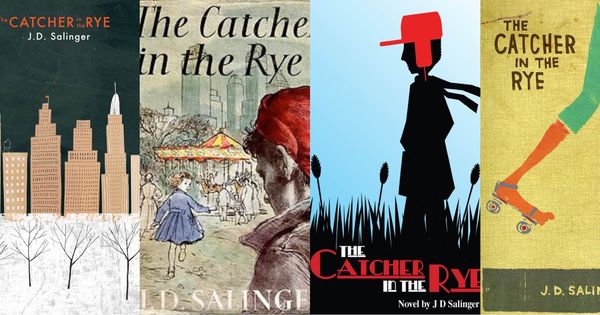
When the time comes, humans must board the train of change toward the destination of personal growth and prosperity. In the novel, Catcher in the Rye, J.D Salinger displays how individuals often face change and the future with uncertainty. Similarly, to how Holden in the novel dislikes change, this message is conveyed through Salinger's use of the Natural History Museum and the pond and the ducks.

Salinger’s use of the Natural History Museum suggests Holden’s state of comfort in viewing the idea of constancy in his life. For example, Holden describes how the museum statues wouldn't "…be different. The only thing that would be different would be you" (121). Furthermore, this suggests that Holden who fears adulthood likes things that don’t change and the museum fits this portrayal since the museum statues freeze in time. He makes positive associations of his era of innocence which then enables him to project his vulnerability through the Natural History Museum, leading him to confront change with great difficulty. For instance, once Holden arrives at the museum he encounters two younger boys who ask him where the mummies are and they reveal where it is but then they get frightened by the dark hallway and run away leaving him "the only one left in the tomb… [he] sort of liked it in a way. It was nice and peaceful" (209). Thus, Holden enjoys his state of comfort in the past which is uncovered through his enjoyment in the “tomb”. This further emphasizes that Holden seeks comfort and security in his childhood years whereas his upcoming adulthood (outside of the tomb) makes him feel depressed and lost. His loss of innocence transpires him to oppose to the idea of encountering adulthood.
Another example is as Holden walks beside the Natural History Museum he starts thinking about his younger sister, Phoebe who would "see the same stuff [he] used to see and how she'd be different every time she saw it" (122). Additionally, this example supports Salinger's message throughout the book because as Holden observes the museum, he is not only afraid of maturity but afraid of his sister maturing into adulthood. Mirrored among almost all adolescents, change and growing up are viewed as difficult since it is a new transition in their lives. In conclusion, Salinger's use of the Natural History Museum offers a better understanding of Holden as a character and how he represents some adolescents in society who lose their innocence, which then sometimes transpires them to oppose the idea of growing up and change.
Another symbol that Salinger uses to support this message in the novel, is the pond and the ducks which symbolize Holden’s incapability of accepting his upcoming future. For example, when Holden has a conversation with his history teacher, Mr. Spencer from Pencey Prep, he starts to think about how "the lagoon in Central Park… was frozen over when [he] got home, and if it was, where did the ducks go" (13). Additionally, this reveals that the idea of the ducks needing to alter their lives in order to survive makes Holden understand that the concept of change is a constant cycle in life. However, he blocks himself from experiencing this cycle of change because of his belief that change is a natural discomfort in human life. 
On the way to Ernie's Holden makes conversation with a taxi driver, Horwitz and asks him if he "happens to know where the ducks go in the wintertime" (81). Holden’s concerns with where the ducks go in the wintertime emphasize his uncertainty upon his upcoming future and highlights how much he dislikes change. After going to the bar Holden walks toward the lagoon at Central Park to find the ducks in the lagoon but he couldn't find any and he had even walked "all round the whole damn lake… [he] thought maybe if there were any around they might be asleep or something near the edge of the water, near the grass and all” (155). This example proves Salinger's message because Holden is unable to accept that fact that ducks must have transitioned due the wintertime which makes Holden worry that he must do the same. In conclusion, the ducks and the pond offer readers an understanding that all humans must undergo alteration at some point in their lives.
In conclusion, this illustrates how one resisting into adulthood or forcing oneself to quickly mature before there are ready, is truly detrimental to one's individual development corroborated through Holden's depressive life. Holden is a representation for all adolescents in society who struggle to adapt to changes in their life such as transitioning into adulthood. Salinger emphasizes that the concept of change is impossible to evade because resisting change can often impede us from great opportunities an developing into better people.
Works Cited









